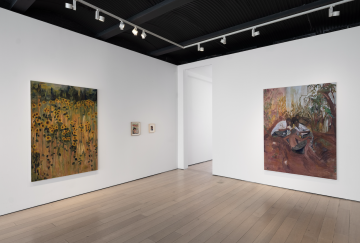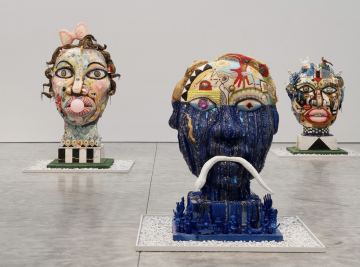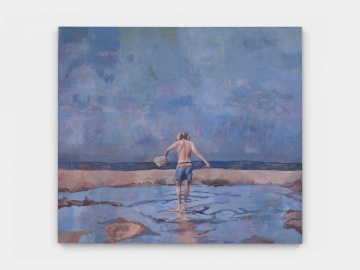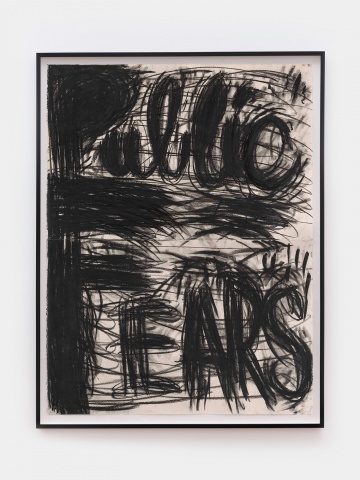Kasmin
Kasmin Gallery & Sculpture Garden
509 West 27th Street
New York, NY 10001
212 563 4474
Also at:
297 Tenth Avenue
New York, NY 10001
212 563 4474
514 West 28th Street
New York, NY 10001
212-563-4474
509 West 27th Street
New York, NY 10001
212 563 4474
Also at:
297 Tenth Avenue
New York, NY 10001
212 563 4474
514 West 28th Street
New York, NY 10001
212-563-4474
Founded by Paul Kasmin (1960–2020) in SoHo in 1989, Kasmin cultivates a rigorous exhibition program that places historic figures of Post-War art in dialogue with the evolving practice of established and emerging artists working today. For over 30 years, the gallery has nurtured the careers of eminent modern and contemporary artists including Tina Barney, Walton Ford, James Nares, Roxy Paine, Elliott Puckette, Mark Ryden, Bosco Sodi, and Bernar Venet, among many others, and put on the first-ever U.S. gallery shows of artists including Les Lalanne. Kasmin was among the first galleries to move to Chelsea in 2000 and continues to expand its program to include more artists and estates, now encompassing three gallery spaces anchored in the heart of the Chelsea Arts District at 10th Avenue and 27th Street.
In addition to supporting contemporary artists, Kasmin leads the field in advocating for the legacy of artist estates, currently representing some of the most influential artists of the 20th century, including Constantin Brancusi, William N. Copley, Stuart Davis, Max Ernst, Barry Flanagan, Jane Freilicher, Robert Indiana, Lee Krasner, and Robert Motherwell. The gallery also specializes in the presentation of large-scale sculpture and engages in public art projects around the world, with recent examples including: Roxy Paine's ongoing installation Cleft in Milwaukee, Wisconsin, Bernar Venet's Arc Majeur along the E411 Highway in Belgium, Alex Katz' Park Avenue Departure on Park Avenue in New York (2019), Mark Ryden’s Dodecahedron at PMQ Gardens in Hong Kong (2018) and Bosco Sodi’s Muro in Washington Square Park, New York (2017). Complementing the gallery’s robust exhibitions program, Kasmin is also dedicated to furthering academic research on its artists and develops scholarly publications that shed new light on their diverse practices. The gallery has published comprehensive catalogs including William N. Copley X-Rated, Lee Krasner’s Umber Paintings, Alexander the Great: The Iolas Gallery 1955-1987, Impasse Ronsin, and the first English translation of a monograph-scale book of Max Ernst’s sculpture. In September of 2018, Brancusi & Duchamp: The Art of Dialogue opened to the public, looking at the creative and personal relationship between the two artists. Dedicated to cultivating collectors and working with artists from around the world, Kasmin participates in a range of international art fairs across Europe, the Americas, and Asia.
Marking a new chapter of curatorial ambition for the gallery, Kasmin expanded the gallery’s footprint in Chelsea with the opening of its fourth space in October 2018. The new, purpose-built gallery designed by studioMDA features a rooftop sculpture garden overlooking The High Line, representing a first-of-its-kind model for publicly sited sculpture. Rejecting the dichotomy that pits brick-and-mortar against new methods of programming, the gallery’s new rooftop sculpture garden places Kasmin’s roster of artists and exhibitions in conversation with one of the most innovative platforms for art developed in recent years, reimagining how a gallery can engage with art and the public.
Kasmin gallery spaces are located at 509 West 27th Street and 297 Tenth Avenue, and the Kasmin Sculpture Garden is viewable from The High Line at 27th Street with access on 28th Street.
Artists Represented:
Diana Al-Hadid
Alma Allen
Theodora Allen
Sara Anstis
Ali Banisadr
Tina Barney
Judith Bernstein
JB Blunk
Mattia Bonetti
Constantin Brancusi
William N. Copley
Cynthia Daignault
Ian Davenport
Max Ernst
Liam Everett
Leonor Fini
Barry Flanagan
Walton Ford
Jane Freilicher
vanessa german
Daniel Gordon
Alexander Harrison
Elliott Hundley
Robert Indiana
Lee Krasner
Les Lalanne
Matvey Levenstein
Lyn Liu
Jasper Morrison
Robert Motherwell
James Nares
Nengi Omuku
Robert Polidori
Jackson Pollock
Elliott Puckette
George Rickey
James Rosenquist
Mark Ryden
Jan-Ole Schiemann
Bosco Sodi
Dorothea Tanning
Naama Tsabar
Bernar Venet
David Wiseman
Works Available By:
Milton Avery
Marcel Broodthaers
Scott Burton
Paul Cezanne
Liu Dan
Lynne Drexler
Marcel Duchamp
Simon Hantaï
David Hockney
Hans Hoffman
Peter Hujar
Alex Katz
Elaine de Kooning
Morris Louis
Henri Matisse
Kenneth Noland
Jules Olitski
Sigmar Polke
Joel Shapiro
Chaim Soutine
Frank Stella
Andy Warhol
Tom Wesselman
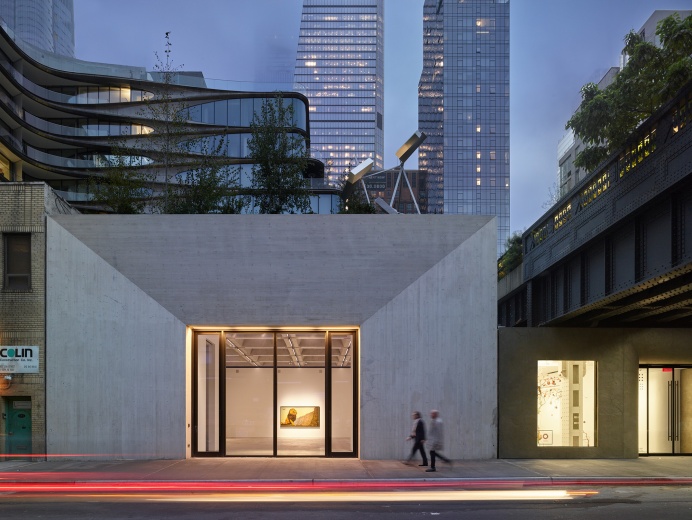
Kasmin's 509 West 27th Street gallery. Photo by Roland Halbe.
Helena Foster
Time Honoured
April 3, 2025 - May 3, 2025
Kasmin presents the first New York solo exhibition of London-based painter Helena Foster (b. 1988, Benin City, Nigeria), on view at 297 Tenth Avenue from April 3, 2025 through May 3, 2025. Helena Foster: Time Honoured features new oil paintings on linen, paper, and vellum that express Foster’s lyrical approach to painting as an accumulation of cultural and generational wisdom. Foster draws freely from literature, theater, film, Igbo oral tradition, and religion, achieving a dreamlike aura of mystery in dynamic compositions ambiguously set between thick vegetation and the built environment. Often populated by figures, whether isolated in anticipation of a gathering or in groups who huddle, recline, and walk in procession, these scenes cohere into a visual universe distinguished by its earthen palette and deft rendering of light. Exploring themes of community, memory, and prophecy, Foster’s paintings offer visual proverbs for the contemporary age.
Foster instinctively pulls from early Nollywood film stills, gospel passages, and Igbo proverbs to develop allegorical compositions that reverberate with emotional resonance and a sense of familiarity. A pair of large-scale paintings on linen, Burden Bearers (2024-25) and Get Up and Dig (2024-25), anchor the exhibition and underscore the narrative vitality of Foster’s work. These canvases feature groups of figures in a terrain of reddish earth, towered by trees and a colorful open sky: in the former, a parakeet overlooks a group of men huddled together; in the latter, a sparrow watches as four standing women encourage a seated fifth to join them on her feet. The men’s shrouded behavior suggests the transformative power of community to offer protection through nourishment and wisdom in difficult times. Their pursuit is answered by the women who uplift their protagonist, now prepared to come out of refuge and begin a new journey on her own.
The settings of Foster’s paintings create a bridge across time and place. Bright One, Full of Light (2024-25) sees an open sunflower field dissolve into abstract swathes of color, based on the landscape the artist observed on a train from Paris to Arles, France. Nearby, Go Slow (2024-25) sees a single file line of workers arrive in the warmth of daylight, shedding the darkness of the coal mine behind them. Inspired by a 1956 photograph of workers exiting the Iva Valley coal mine in Enugu, Nigeria, the site of a 1949 massacre of striking workers, Foster’s painting provides a prescient reminder to be gentle—but also to persist.
Foster’s works on paper and vellum, a highly refined form of parchment, emphasize the literary connotations of her compositions. She conceives of painting as an act of translation, reimagining the structural elements of Igbo proverbs in figurative, literal, and abstract dimensions. Her attentive technique analogues the tonal nature of the Igbo language: Foster carefully applies each brushstroke with a pronounced delicacy, anticipating the responsive temperament of her substrates. At an intimate scale, Sunday Ritual (2024) and Get Set, Go (2024) present lone figures whose surroundings diffuse into passages of color, an effect extended to larger works such as In Procession (2024), where a woman in green leads a line of men toward the entrance of a building.
vanessa german
GUMBALL–there is absolutely no space between body and soul
April 3, 2025 - May 10, 2025
Kasmin presents its second solo exhibition of new work by artist vanessa german (b. 1976), which debuts related bodies of sculpture across two of the gallery’s spaces in New York. GUMBALL—there is absolutely no space between body and soul deepens german’s singular approach to sculpture as a spiritual practice with the power to transform lived experience. Both series comprise mineral crystals, beads, porcelain, wood, paint and the energy that these objects bring to life to form monumental heads and figures in the act of falling. Together, each body of work envisions the transformation of consciousness necessary to imagine a new world.
On Saturday, April 5, from 10:30–11:30am, german will lead an interactive conversation in the exhibition, consciously exploring the works through the lenses of prayer, process, and curiosity. This event will be intimate, vulnerable, free, and accessible to all. Seating will be provided for any individuals who are unable to stand.
In the gallery’s flagship 509 West 27th Street location, german unveils a new series of monumental heads. Incorporating images of stars, words, numbers, animals and human forms, german conceives of these sculptures as cosmic maps, proposing a cartography for a sacred place that embraces the full creative potential of all people. Each sculpture reflects the shimmer of lapis, rose quartz, clear quartz, onyx, obsidian, and other natural stones that harness healing properties. Ahead of this body of work, the subject of the head engrossed german’s creative spirit in a number of watercolors and preparatory sketches on paper. The works recall the substantial weight of the Olmec heads of ancient Mesoamerica, which german cites as a source of inspiration, furthering a direction she explored in a work for her 2024 solo exhibition at the University of Chicago’s Logan Center for the Arts.
german’s intuitive gathering of colors, symbols, words and numbers resemble painted marks that offer prayer and wellness to viewers, magnified by the works’ colossal presence. The silhouette of a hand, or an anatomical diagram of a heart, reflect her engagement with the human form and its capacity for connection. Certain heads reflect german’s recent introduction of numerology to her practice. These include sequences of numbers, such as the date “3-6-2025,” documenting the day german began to adorn the head’s surface. The appearance of words such as “LOVER” or “I SEE YOU” acknowledge the works’ relationship to their viewers and demonstrate the artist’s commitment to love as an infinite human technology.
At 514 West 28th Street, german presents a related series of “fallen figures” that are each caught in a dip (also known as a death drop), a move performed by vogue dancers and originating in ballroom culture. Capturing the drama of the pose, the figures balance on one leg as the other kicks into the air, giving the impression they are falling downward. They are installed on a runway that extends from the gallery wall, recalling the ballroom competitions where the move originated—a sacred place where creativity has flourished in the face of structural violence, exploitation, and injustice.
These sculptures’ heads are replaced with porcelain figurines of racist caricatures in the act of reclaiming power from their white counterparts. Described by the artist as an allusion to the fall of empire, the works foreground the creative potential found in their subjects’ resilience. While the fall down gives the illusion of death, the figures are inevitably poised to rebound upward, empowered by their expression. Each fallen figure rises like a phoenix from the ashes, ushering in the atmosphere of renewal found in the series of heads.
vanessa german
GUMBALL–there is absolutely no space between body and soul
April 3, 2025 - May 10, 2025
Kasmin presents its second solo exhibition of new work by artist vanessa german (b. 1976), which debuts related bodies of sculpture across two of the gallery’s spaces in New York. GUMBALL—there is absolutely no space between body and soul deepens german’s singular approach to sculpture as a spiritual practice with the power to transform lived experience. Both series comprise mineral crystals, beads, porcelain, wood, paint and the energy that these objects bring to life to form monumental heads and figures in the act of falling. Together, each body of work envisions the transformation of consciousness necessary to imagine a new world.
On Saturday, April 5, from 10:30–11:30am, german will lead an interactive conversation in the exhibition, consciously exploring the works through the lenses of prayer, process, and curiosity. This event will be intimate, vulnerable, free, and accessible to all. Seating will be provided for any individuals who are unable to stand.
In the gallery’s flagship 509 West 27th Street location, german unveils a new series of monumental heads. Incorporating images of stars, words, numbers, animals and human forms, german conceives of these sculptures as cosmic maps, proposing a cartography for a sacred place that embraces the full creative potential of all people. Each sculpture reflects the shimmer of lapis, rose quartz, clear quartz, onyx, obsidian, and other natural stones that harness healing properties. Ahead of this body of work, the subject of the head engrossed german’s creative spirit in a number of watercolors and preparatory sketches on paper. The works recall the substantial weight of the Olmec heads of ancient Mesoamerica, which german cites as a source of inspiration, furthering a direction she explored in a work for her 2024 solo exhibition at the University of Chicago’s Logan Center for the Arts.
german’s intuitive gathering of colors, symbols, words and numbers resemble painted marks that offer prayer and wellness to viewers, magnified by the works’ colossal presence. The silhouette of a hand, or an anatomical diagram of a heart, reflect her engagement with the human form and its capacity for connection. Certain heads reflect german’s recent introduction of numerology to her practice. These include sequences of numbers, such as the date “3-6-2025,” documenting the day german began to adorn the head’s surface. The appearance of words such as “LOVER” or “I SEE YOU” acknowledge the works’ relationship to their viewers and demonstrate the artist’s commitment to love as an infinite human technology.
At 514 West 28th Street, german presents a related series of “fallen figures” that are each caught in a dip (also known as a death drop), a move performed by vogue dancers and originating in ballroom culture. Capturing the drama of the pose, the figures balance on one leg as the other kicks into the air, giving the impression they are falling downward. They are installed on a runway that extends from the gallery wall, recalling the ballroom competitions where the move originated—a sacred place where creativity has flourished in the face of structural violence, exploitation, and injustice.
These sculptures’ heads are replaced with porcelain figurines of racist caricatures in the act of reclaiming power from their white counterparts. Described by the artist as an allusion to the fall of empire, the works foreground the creative potential found in their subjects’ resilience. While the fall down gives the illusion of death, the figures are inevitably poised to rebound upward, empowered by their expression. Each fallen figure rises like a phoenix from the ashes, ushering in the atmosphere of renewal found in the series of heads.
Emil Sands
Salt in the throat
January 9, 2025 - February 15, 2025
Kasmin announces its first solo exhibition of work by New York-based painter Emil Sands (b. 1998, London). For his debut exhibition in Chelsea, Sands explores shifting codes of human behavior and the influence of the surrounding world in a suite of new paintings. In the open air of a seascape or the shadows of a dense forest, Sands’ settings act as stage sets in which his cast of characters perform, reading one another's subtle gestures. As he exaggerates these figures and invites viewers to extrapolate on their relationships, Sands' considered brushwork and intuitive use of color combine to construct narratives filled with sensitivity and pathos.
In Salt in the throat, Sands' impressionistic tableaux blur the boundary between portraiture and landscape, delighting in the beauty and potency of expansive scenery. With their bodies exposed to the outdoors, the painter’s subjects engage in quiet exploration, contemplation, and play. Occasionally, they present themselves assertively as a knowing recipient of another’s gaze. Gestures find repetition—a bent elbow or a hand on a hip call to mind the striking stance of Cézanne’s The Bather (c. 1885, MoMA). Several stand in relaxed contrapposto, a pose of classical sculpture that Sands invokes even as he disregards the conventions of idealized bodies, using partial nudity to exaggerate eccentricities in their appearances. While the works may reveal a voyeuristic impulse in their viewers, the subjects’ unassuming poses resist a sexual charge, serving only to emphasize Sands’ inquiry into the human body.
Judith Bernstein
Public Fears
January 6, 2025 - February 15, 2025
On January 6, 2025, Kasmin will open Judith Bernstein’s (b. 1942) third solo exhibition at the gallery, Public Fears. Taking over the flagship 509 West 27th Street space, the exhibition will survey nearly 60 years of work—from 1966 to the present—underscoring the enduring urgency of Bernstein’s trailblazing artistry. Including new paintings, works on paper, and a restaging of her iconic Signature Piece (1986), this will be Bernstein’s first New York solo exhibition since the acquisition of her major charcoal screw drawing Horizontal (1973) by The Metropolitan Museum of Art in 2023. The exhibition anticipates the artist’s major museum retrospective at Kunsthaus Zurich in 2026.
Bernstein’s most recent painting series, Death Heads, adopts an inward-looking gaze and offers an introspective meditation on the sublimity of death. Distinguished from her earlier, more outwardly polemical works, these iconographic heads appear at once transfixed in awe and in a state of active alarm, reflecting the tension fundamental to the poetic dyad of life and death. The paintings draw on the same gestural movements of Bernstein’s earlier screws and their use of serial repetition, yet they employ less tongue-in-cheek double entendre and more art historical and cultural nods to the past—from Edvard Munch to M17 gas masks. As much as these paintings reflect a climate of ubiquitous violence and uncertainty, they are, at their core, diaristic expressions of an artist confronting her own impermanence.

 Back to all Member Galleries
Back to all Member Galleries

